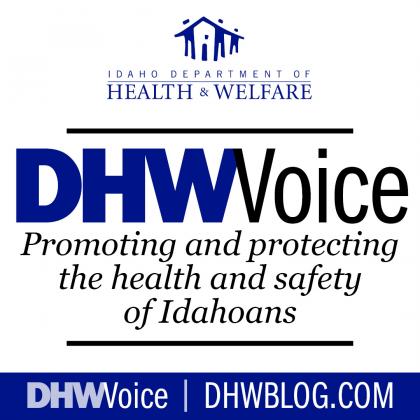The Division of Public Health embarked on a journey starting in 2019 to improve the likelihood that all Idahoans have the same opportunity to live and thrive in safe, healthy, and resilient communities. To do this, the division led a statewide assessment to identify Idaho’s top health priorities. The assessment included data that identified the most common reasons Idahoan’s get sick or die, and interviews with regional and local organizations to better understand the needs of the people they serve.
The result was a list of health risk and outcome measures that included the top causes of death, rates of chronic diseases such as diabetes and heart disease, health behaviors such as diet and exercise, and community factors such as poverty levels and access to healthy food (known as social determinants of health).
Once all the data were collected and organized, the division brought partners together to vote and agree on the state’s top health priorities, which are:
- Diabetes
- Overweight and obesity
- Behavioral health
- Unintentional injury (specifically motor-vehicle accidents, falls and accidental poisoning/drug overdose)
Following the assessment, the division developed a five-year plan to impact those priorities. The assessment and health improvement plan is known as Get Healthy Idaho: Building Healthy and Resilient Communities (GHI).
Following is more information about the four priority health issues.
Diabetes
In 2022, more than 145,661 Idaho adults, nearly 10 percent of the state population, were living with diabetes.
In general, people with diabetes are more likely to have severe symptoms and complications if they get sick from any virus regardless if they have type 1, type 2, or gestational diabetes. The risk for severe sickness is likely to be lower if the diabetes is well managed. Being up-to-date on immunizations and sticking with treatment regimens to manage diabetes are key prevention strategies.
The Idaho Diabetes, Heart Disease, and Stroke Prevention Program is working with heart disease and diabetes associations, state universities, national diabetes prevention programs, Diabetes Self-Management Education and Support Programs, health systems, and pharmacies throughout Idaho to prevent and manage diabetes.
Overweight and obesity
Idaho, like most states, is seeing a steady increase in the percentage of its population that is overweight or obese. According to the Idaho Behavioral Risk Factor Surveillance System (BRFSS), the percentage of Idaho adults aged 18 and older who report having obesity increased from 20.5 percent in 2001 to 31.6 percent in 2021.
The same is true for Idaho youth. In 2021, 28.1 percent of Idaho high school students described themselves as slightly or very overweight, and 11.9 percent were obese, according to the Youth Risk Behavior Survey.
Obesity rates vary by population and county. Idahoans who are Hispanic, Latino, American Indian and Alaskan Native experience the highest obesity rates, as do those who live in Canyon and Power counties compared to people living in Valley County, for example.
To impact overweight and obesity, communities must come together to ensure supports are in place for families and individuals. Some of these supports include ensuring healthy foods are available and affordable and outdoor environments are safe for exercise and activity.
The Idaho Physical Activity and Nutrition Program (IPAN) is working with several partners to support obesity prevention efforts statewide, including local public health districts; the Healthy Eating, Active Living (HEAL) Idaho Network; Idaho Hunger Relief Task Force; the SNAP-Ed Program; and Maternal and Child Health (MCH) Program in the Division of Public Health.
Behavioral Health
Behavioral health conditions include both mental health and substance use disorder diagnoses. These affect millions of adults and young people in Idaho and the U.S. every year.
Mental health professionals are few in numbers, and demand is high in all of Idaho’s 44 counties. For those who live in rural areas of Idaho, finding treatment services for behavioral health issues can be especially hard.
The Division of Public Health works closely with the Division of Behavioral Health, the Idaho Office on Drug Policy, and other key stakeholders to help Idahoans who need behavioral health and substance use disorder services get access to those services when they need them.
The Drug Overdose Prevention Program, in the Division of Public Health, works with partners and stakeholders to focus specifically on the growing opioid crisis. Their efforts include working with and educating prescribers to use the Idaho Prescription Drug Monitoring Program; funding naloxone trainings to help prevent overdoses, supporting prescription-drug take-back events, and educating healthcare providers and the public through local public health districts and tribal public health events.
Unintentional injury (specifically motor-vehicle accidents, falls and accidental poisoning/drug overdose)
Unintentional injuries involving motor vehicle accidents, discharge of firearms, drownings, suffocations, falls, and unintentional drug overdoses, are a big concern in Idaho. They were the fourth leading cause of death in Idaho in 2021, with a total of 1,163 deaths.
Unintentional injury can result in permanent disability and cause serious financial impacts to people and their families. These injuries can be prevented by understanding the risks for injury and adopting proven intervention strategies. Accidental falls, motor vehicle accidents, and accidental poisoning from drugs and other harmful substances were selected as Idaho’s top injury priorities.
The Division of Public Health is working with several partners, including local public health districts, Idaho Department of Transportation, Idaho Office on Drug Policy, the Division of Behavioral Health, and the division’s Drug Overdose Prevention Program to study and address these issues.
More details about each of these Public Health priorities is available in the Get Healthy Idaho: Building Healthy and Resilient Communities (GHI).
Traci Berreth, PhD, MPH, is a deputy administrator in the Division of Public Health. She leads the division’s cross-cutting efforts around performance, policy, and strategy. Traci has worked in the division for 23 years.
The Idaho Department of Health and Welfare is dedicated to strengthening the health, safety, and independence of Idahoans. Learn more at healthandwelfare.idaho.gov.


Join the Discussion
Please note the following terms of participation in commenting on the DHW Voice blog.
To ensure a productive discussion you agree to post only comments directly related to this post and to refrain from posting obscenities; threatening, abusive or discriminatory language; sexually explicit material; and other material that would violate the law if published here; promotional content; or private information such as phone numbers or addresses. DHW reserves the right to screen and remove inappropriate comments.